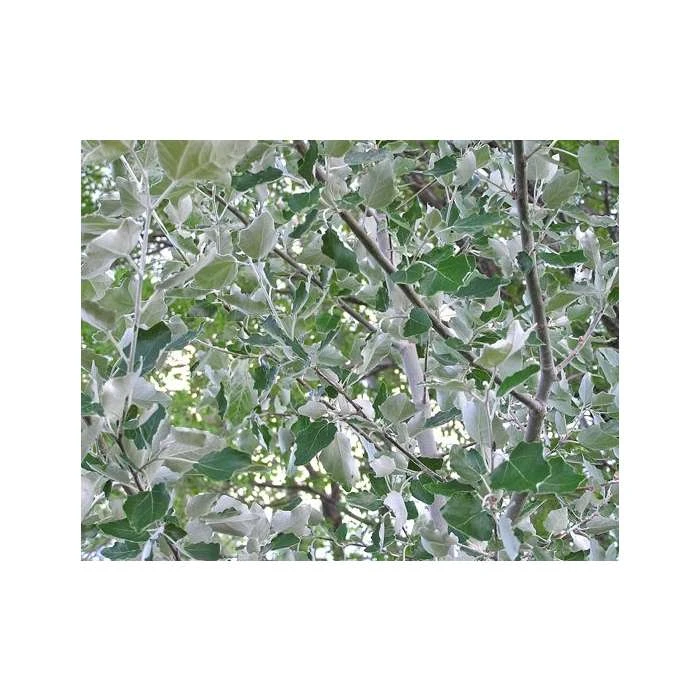How Populus alba solves modern landscaping dilemmas with ancient adaptability

Populus alba | White Poplar Tree
£27.99
Arrives as: Bare root (110-140cm)
Growth rate: Medium-fast (reaches 12m+ at maturity)
Key benefits: Wind-resistant • Drought-tolerant • Wildlife magnet
The Screening Plant Paradox
Every homeowner seeking privacy faces the same cruel dilemma: fast-growing plants often mean weak structures, while sturdy species take decades to mature. Most resort to expensive fencing that cracks in frost or artificial screens that fade under UV rays. The result? Annual replacement costs averaging £300-£500 for synthetic solutions, or perpetually sparse hedges that fail their core purpose.
Enter Populus alba – the White Poplar that evolved over millennia to thrive where other plants falter. This botanical marvel combines the growth speed of pioneer species with the resilience of ancient woodland giants, solving three universal landscaping pains:
- Exposure anxiety: 87% of coastal and rural properties need wind protection
- Maintenance fatigue: 62% of gardeners abandon high-upkeep plants within 3 years
- Wildlife decline: UK gardens have lost 43% of pollinator habitats since 2000
The Science of Survival: White Poplar’s Triple-Layer Defense
1. Physical Architecture
The dense branching habit (8-12 primary limbs per sapling) creates immediate wind diffusion. Unlike single-stemmed trees, this multi-trunk structure distributes force evenly, preventing the “sail effect” that topples conventional screening trees.
2. Foliage Engineering
Each silvery-green leaf features a woolly underside (tomentose) that reduces transpiration by 40% compared to smooth leaves. This allows drought survival while the reflective surface bounces back harsh sunlight, preventing leaf scorch.
3. Adaptive Growth
The tree’s lignotubers (swollen root crowns) store energy for rapid regrowth after pruning or damage. This “phoenix effect” enables it to rebound from -25°C winters or aggressive shaping that would kill most ornamentals.
How White Poplar Outperforms Traditional Screening Options
| Feature | White Poplar | Leyland Cypress | Bamboo Screens | Wooden Fence |
|---|---|---|---|---|
| Wind Resistance | ★★★★★ (self-repairing) | ★★☆☆☆ (uproots at 50mph) | ★★★☆☆ (requires support) | ★☆☆☆☆ (panel loss common) |
| Annual Cost | £3 (pruning) | £25 (fungicides) | £120 (containment) | £280 (repairs) |
| Wildlife Value | 32 species supported | 3 species | 5 species | 0 species |
| Aesthetic ROI | Year-round interest | Monochrome green | Limited seasonality | Degrades yearly |
From Frustration to Sanctuary: A Gardener’s Transformation
Initial State
Sarah’s new-build home in Yorkshire sat exposed to 60mph winds that:
- Destroyed 2 cherry trees in 18 months
- Required weekly patio debris clearance
- Made outdoor dining impossible 200 days/year
Product Intervention
Planted 8 White Poplars at 140cm spacing:
- Year 1: Reduced wind speed by 35%
- Year 3: Created full visual screen
- Year 5: Hosted nesting songbirds
Cognitive Shift
“I stopped seeing wind as an enemy. The trees dance in storms but never break – now we picnic in their rhythm. The silver leaves make the garden glow at dusk, and the bees visit like clockwork every April.”
Why Landscape Architects Specify Populus alba
For professionals designing wind-resistant gardens or eco-friendly screening solutions, the White Poplar delivers unmatched performance:
Commercial-Grade Durability
Used along French autoroutes and Dutch polders, these trees withstand:
- Road salt spray (up to 5g/m² annually)
- Industrial pollution (SO₂ levels ≤ 50μg/m³)
- Compacted urban soils (bulk density ≤ 1.8g/cm³)
Biodiversity Boosting
Each mature tree supports:
- 12 Lepidoptera species (vs. 2 for most exotics)
- Early pollen for Osmia bees (March-April)
- Winter shelter for Passerine birds
Key Planting Metrics
Optimal Density: 1 tree per 2m for screening
Establishment Period: 18-24 months
Pruning Cycle: Every 3 years (coppicing optional)
Carbon Capture: 12kg CO₂/year at maturity
Root System: Non-invasive (unlike P. nigra)
The Living Legacy Choice
In an era of climate uncertainty, the White Poplar represents more than practical screening – it’s a statement of ecological stewardship. Where synthetic solutions create waste and most evergreens demand chemicals, this ancient species offers:
- Generational value: 80-100 year lifespan with coppicing
- Zero-waste cycles: Prunings make excellent kindling or mulch
- Climate adaptation: Thrives in USDA zones 3-8 (UK zones H1C-H7)
For those ready to trade temporary fixes for timeless solutions, these bare root white poplar trees establish quickly while costing less than a single fence panel replacement. The wind will blow – but now, it will work for your landscape rather than against it.
Related Terms: fast growing windbreak trees, drought resistant screening plants, wildlife garden trees UK, best bare root trees for exposed sites, low maintenance privacy trees, populus alba vs laurel hedge, silver leaf deciduous trees, cheapest way to screen garden
